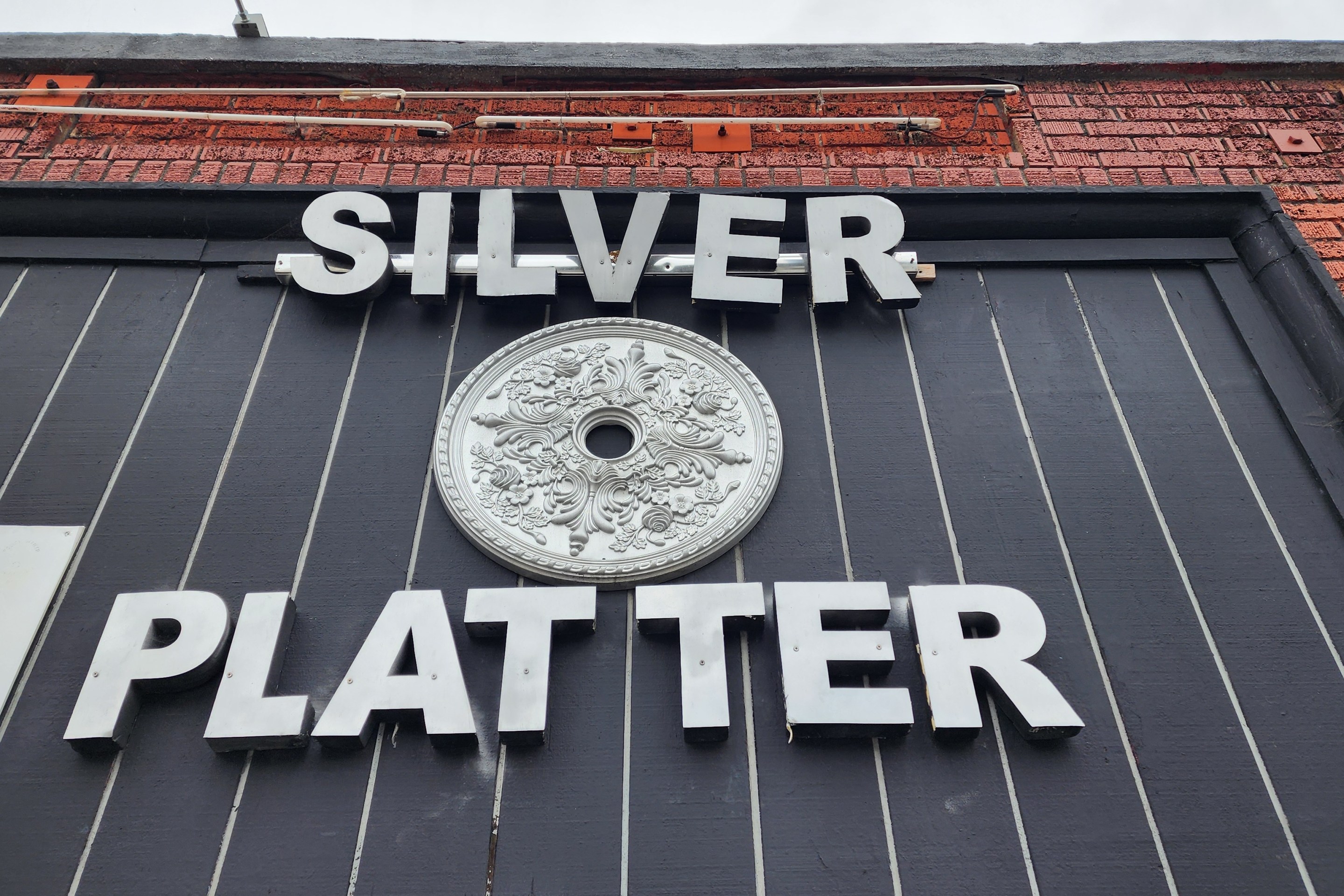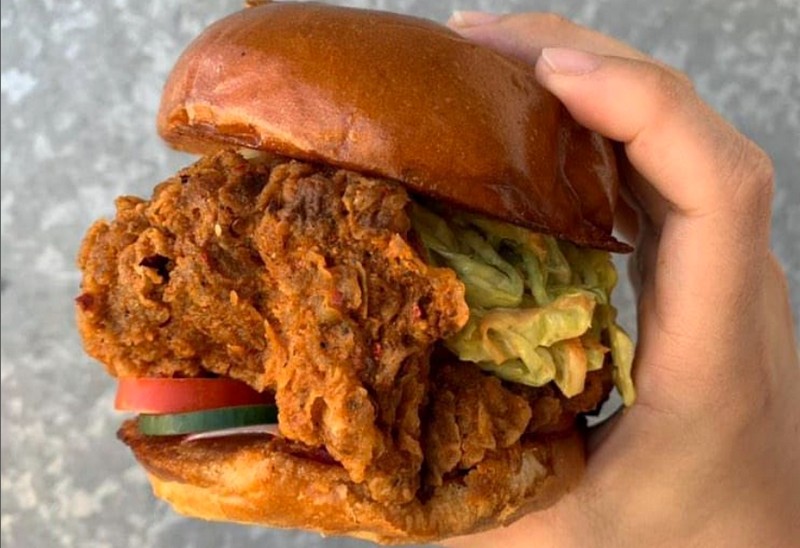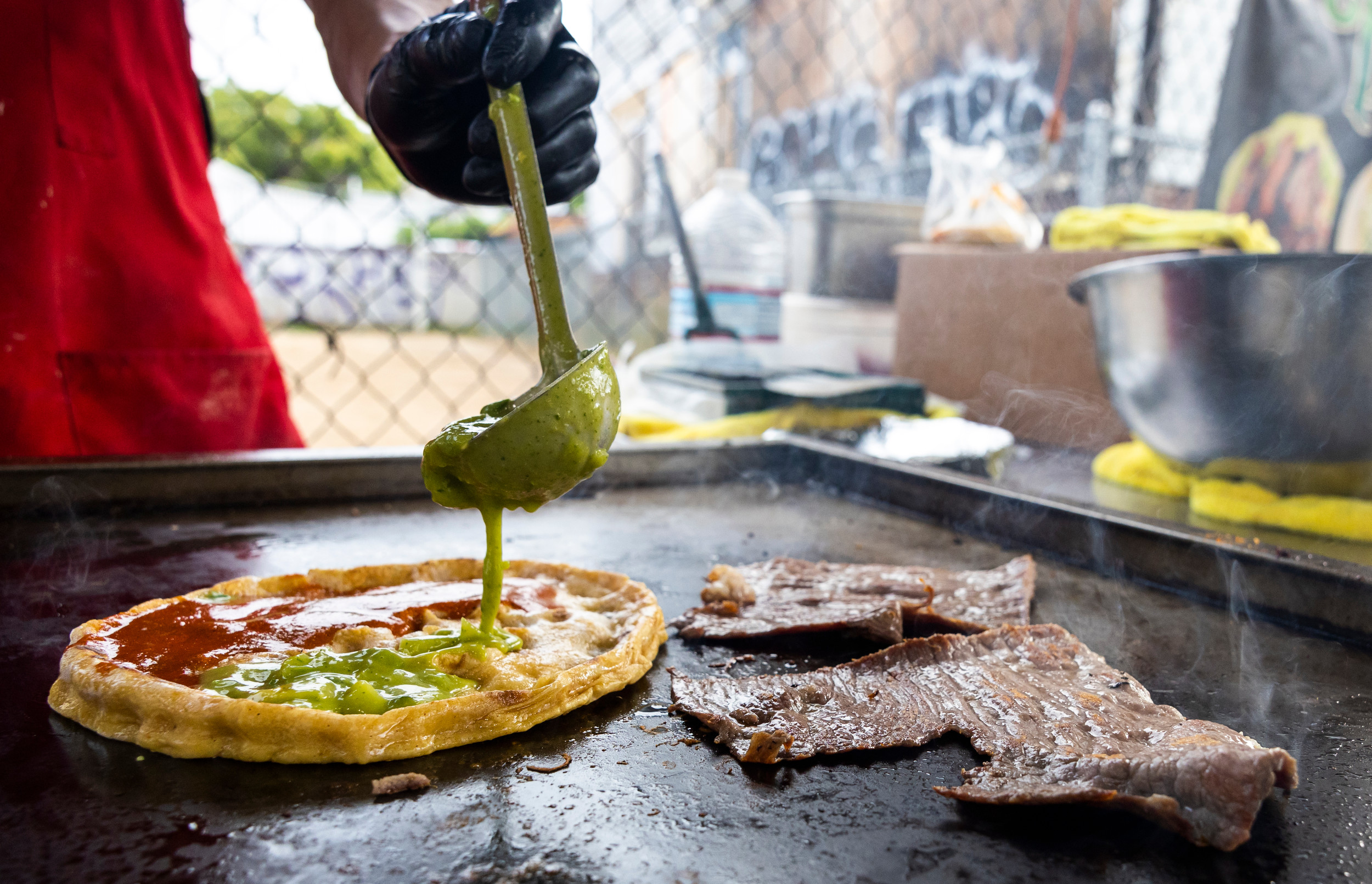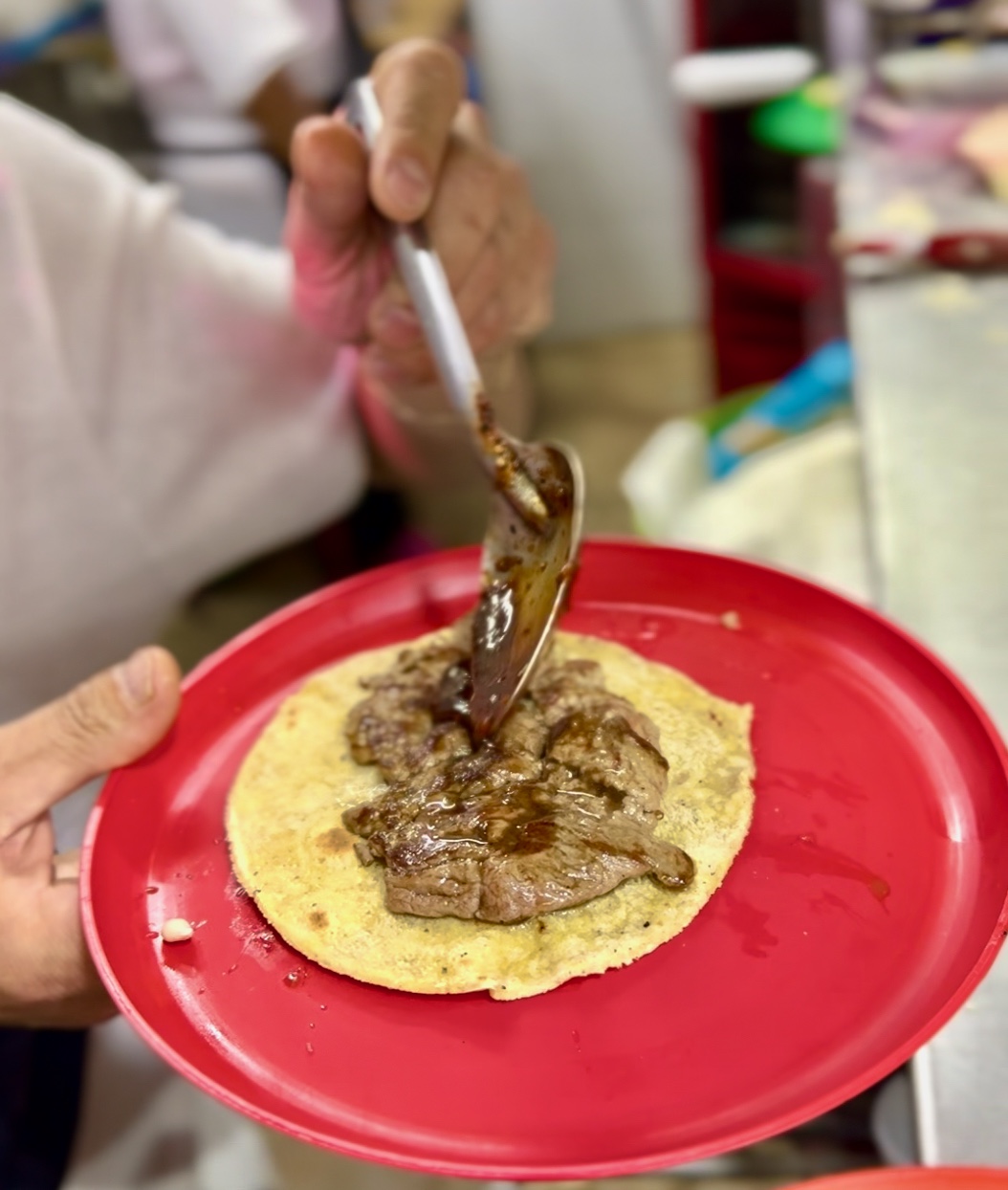[dropcap size=big]W[/dropcap]hen Little Damage Ice Cream opened in downtown recently, I imagined it as another boutiquey ice cream shop in a city that is already full of them, albeit one that generated more media attention than others thanks to a buzzworthy flavor of soft serve that they sell: charcoal almond. However, after visiting the store, I realized that there is a lot more going on there. It is a very cerebral place that is compelling not only for what it puts into our stomachs but also for what it puts in our minds: its ability to comment on our evolving relationship to food in these digital, social-media-heavy times.
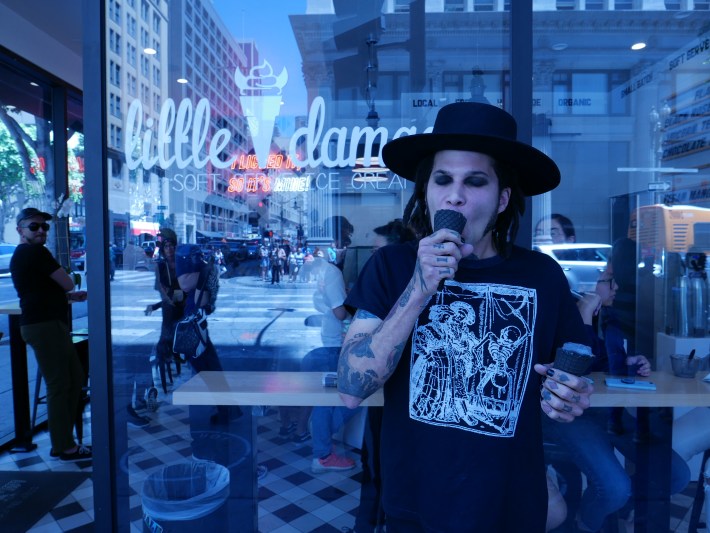
When customers first enter the brightly lit shop, they face a marquee that presents them with a choice of just four ice cream flavors. These apparently change over time, but of course I arrived knowing that I wanted the charcoal almond, which has made a splash on social media. This dark grey swirl came piled into an equally dark grey cone, also made with charcoal. I requested a white coconut flake topping, which gave the dessert a two-tone aesthetic—goth but with some ska thrown in.
This peculiar flavor actually has a point to make: it criticizes the old industrial attitude to the world that held sway throughout the twentieth century and affirms the new, information-based economy. Consider the ingredients. Charcoal evokes all the grit and grime of heavy industry. To make a food out of it, particularly a dessert, is a way of showing that the remnants of the old industrial landscape can be reimagined and even made into sources of pleasure. We see something similar with other projects that “repurpose” the built environment: food trucks that turn vehicles into restaurants, fancy lofts built out of old factories, and even some fitness regimes (like parkour). All of these things validate our ability to reimagine the physical world and highlight the industrial outlook’s rigidity, which was too narrow minded to grasp its full potential. The presence of almonds is an important counterpoint: if charcoal conjures up twentieth century industrialism, which wanted to remake everything but was inflexible, these little gems, which do not need cooking to be edible, remind us that sometimes we don’t need to do anything to find rewards in the world. The idea is that we need to be creative but also sensitive. These are resonant points in downtown, which is increasingly a hub for high tech firms that make billions in the post-industrial, information-based economy.
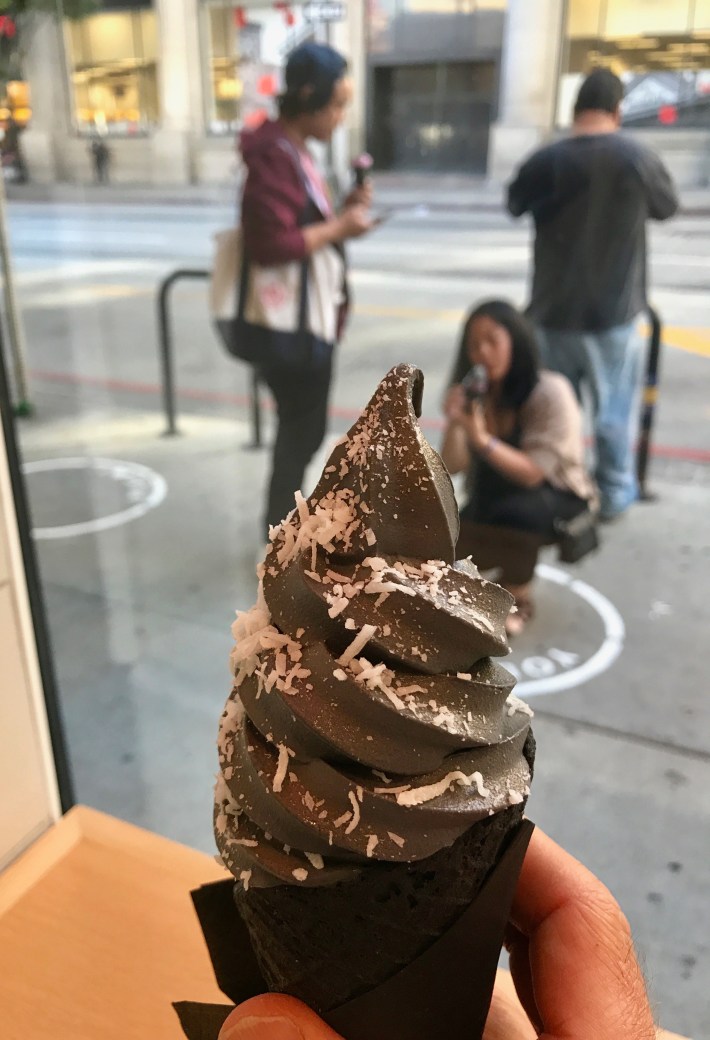
As I bit into the ice cream, I first noticed that it was not saturated with sugar like most American brands—it was sweet, but not overwhelmingly so. This made it much more palatable. In fact, I could have had two servings without feeling sick, which is not something that I can say about Ben and Jerry’s or Häagen-Dazs. It was also less granular in texture as a result, even for soft-serve. It reminded me of machine-dispensed frozen yogurt, although it was more dense, which likely reflected the use of high-quality ingredients (and that it wasn’t filled with air). The charcoal was mostly tasteless other than a hint of alkaline; this put the faint, buttery clarity of the almond in relief. This combination definitely worked well. More than just a vehicle for sugar delivery, and more than just strange, it was good, interesting ice cream.
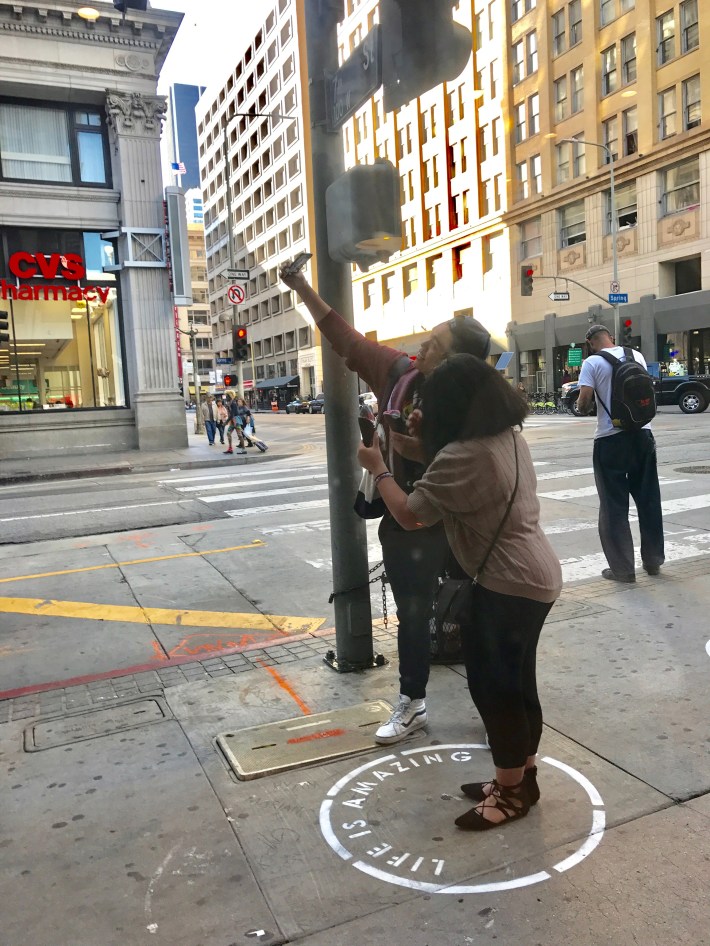
However, something else captured my attention: everyone was snapping photos of their ice cream, of themselves, and of themselves with their ice cream, which they were clearly uploading or would soon upload to Instagram or some other site. This was happening inside and immediately outside of the store. Most were using their phones, except for one woman, who came armed with a huge DSLR camera, which she piloted around the establishment. The shop even had a photo booth of its own, just in case you had come unprepared. I admit that I smirked when I became aware of all of these documentarians, until I realized that I was also photographing my ice cream and thinking about posting the pictures online. I hesitated before snapping a picture of the counter area—I feared that would feel invasive to the woman working there—but she seemed indifferent to it all. Presumably she had accepted that this digital exposure is part of her job like it is, for example, for the women working booths at tech trade shows.

This was so pervasive that it made me wonder about Little Danger itself: is it really an ice cream shop or actually in the business of selling edible props that people use to enhance their social media profiles? And what does this say about the impact of social media on food generally? If we typically ask whether a food is healthy or tastes good, perhaps we will now start taking into account its ability to help us get new Twitter and Instagram followers. Do we need to rebuild the food pyramid with social media in mind? It appears that food is starting to please us and nourish us in new, essentially digital ways.
Pondering these admittedly abstract questions changed my feelings about all the photographing going on. In the context of an increasingly digitalized, post-industrial economy, maybe this was not as indulgent as I first thought. If data and ideas—not things—drive the economy now, then it makes sense that we would frantically generate data for social media companies and try to find clever ways to position ourselves in the digital world. Perhaps we were all working at Little Damage or at least preparing to work. Certainly the ice cream flavor pointed to the new economic context and the shop itself is highly attuned to today’s links between information technology and food.
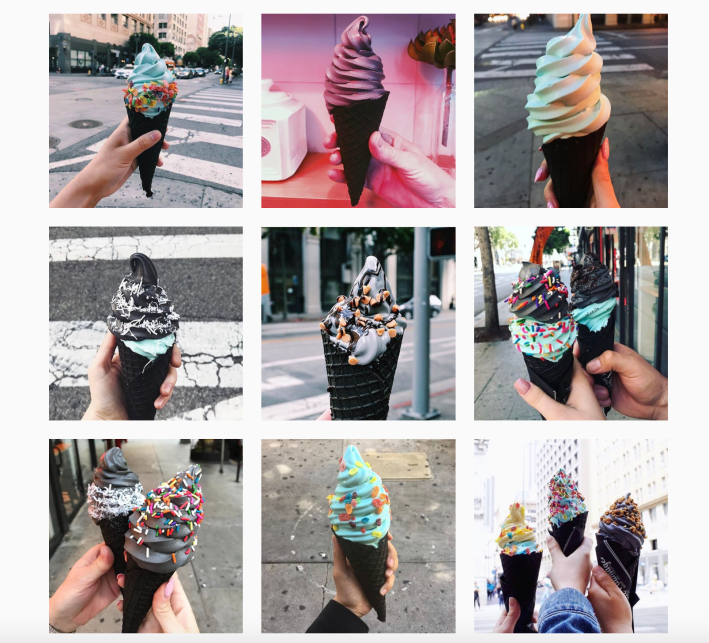
I admit that I wanted to like-but-not-like Little Damage. I knew that the ice cream would be unusual and I assumed that I would enjoy it, but I expected to leave feeling annoyed by the shop’s boutiquey quality. That would be a comfortable posture for me: sure, I might be a little fatter for the experience, but I wouldn’t feel implicated in its quaint, preciousness, which seems to be spreading all over LA. Instead I felt engaged and drawn into its commentary on industrialism and illustration of our changing approach to food. And that is the genius of this genuinely challenging soft-serve ice cream shop.


